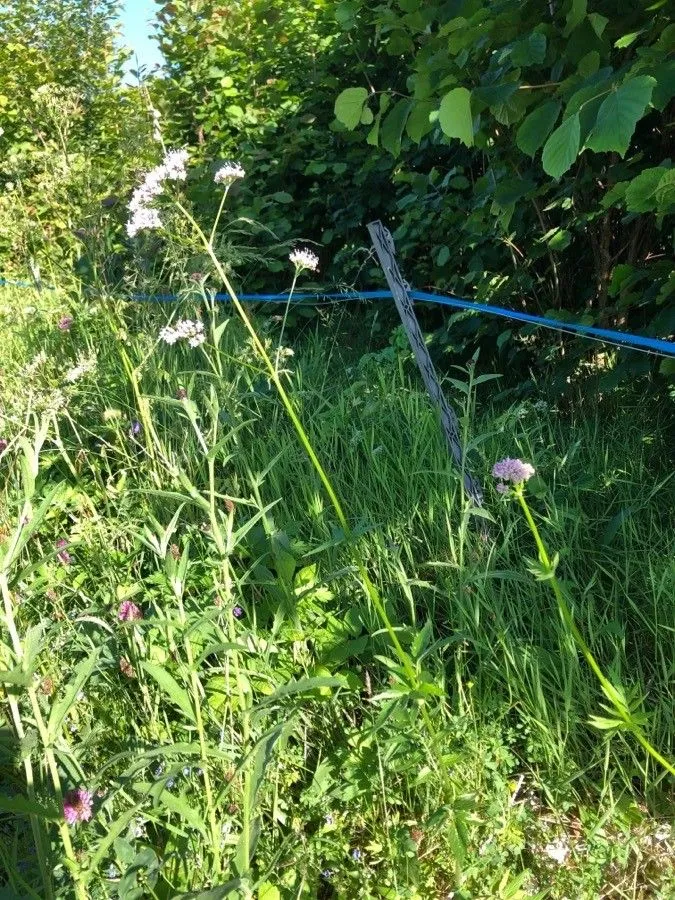
Author: L.
Bibliography: Sp. pl. 1:31. 1753
Year: 1753
Status: accepted
Rank: species
Genus: Valeriana
Vegetable: False
Observations: Europe to NW. Türkiye
Marsh valerian, known scientifically as Valeriana dioica, is a notable member of the Caprifoliaceae family. This perennial herbaceous plant is predominantly found throughout Europe, extending its range to the northwest regions of Türkiye, thriving in marshy and damp environments such as wet meadows and fens.
Characterized by its delicate and fragrant flowers, Marsh valerian typically reveals its beauty in late spring to early summer. The flowers exhibit a palette of soft pinks and whites, assembled in compact clusters that attract a variety of pollinators, including bees and hoverflies. Each plant features dioecious characteristics, meaning there are distinct male and female plants. This differentiation adds an interesting dynamic to its reproductive biology, as both sexes must be present in a habitat for seed production.
The foliage of Valeriana dioica consists of pinnate leaves that are long and slender, providing a lush, green backdrop that enhances the visual appeal of its blossoms. The leaves exude a mildly aromatic scent, reminiscent of other members within its family, which is often noticeable during the gentle breezes of summertime.
Historically recorded in 1753 by the renowned botanist Carl Linnaeus, this species is cited in his work “Species Plantarum” as an important botanical specimen. Since then, Marsh valerian has been recognized not only for its aesthetic contributions to natural landscapes but also for its potential medicinal properties. Traditionally, various parts of the plant have been used in herbal remedies aimed at promoting relaxation and alleviating stress, although compared to other valerian species, its use is less widespread.
Conservationally, the habitats of Marsh valerian are subject to challenges due to environmental changes and habitat destruction. Conservation efforts are essential to ensure that this charming plant continues to flourish in the wild, maintaining the biodiversity of the wetlands where it plays a significant ecological role.
In summary, Marsh valerian, or Valeriana dioica, stands as a testament to the delicate beauty and ecological importance of wetland flora. Its presence across Europe to northwest Türkiye highlights its adaptability and the vital role it performs within its native habitats. Through continued preservation and appreciation, Marsh valerian will persist as a cherished component of our botanical heritage.
Deu: kleiner baldrian, kleiner baldrian, sumpf-baldrian, sumpfbaldrian
Eng: marsh valerian, marsh valeriana, northern valerian, woods valerian
Nor: småvendelrot
Dan: tvebo baldrian
Nld: kleine valeriaan
Nob: småvendelrot
Nno: småvendelrot
Swe: småvänderot
Fra: valériane dioïque, petite valériane
Cym: bychan y dors, driacloc, triaglog bychan y gors, triaglog fechan y gors, triaglog y gors
En: Marsh valerian, Marsh valeriana, Northern valerian, Woods valerian, Small wild Valerian
Be: Валяр’ян двухдомны
Cr: Apicakowaskos
Cs: Kozlík dvoudomý
Da: Tvebo Baldrian
Nl: Kleine valeriaan
Et: Kahekojane palderjan
Fi: Pikkuvirmajuuri
Fr: Valeriane dioique, Valériane des marais, Valériane dioïque, Petite valériane
De: Kleiner Baldrian, Sumpf-Baldrian, Sumpfbaldrian, Kleiner Baldrian, Sumpf-Baldrian
Hu: Kétlaki macskagyökér
It: Valeriana palustre
No: Småvendelrot
Nb: Småvendelrot
Nn: Småvendelrot
Pl: Kozłek dwupienny
Sk: Valeriána dvojdomá
Es: Valeriana de arroyos, Verberiana
Sv: Småvänderot
Cy: Triaglog y gors, Bychan y Dors, Driacloc, Triaglog Bychan y Gors, Triaglog Fechan y Gors
Taken Jun 8, 2020 by Thibaut Durr (cc-by-sa)
Taken Jul 11, 2021 by Flore BESIN (cc-by-sa)
Taken Jun 8, 2020 by Thibaut Durr (cc-by-sa)
Taken Jun 25, 2018 by parramon marta (cc-by-sa)
Taken May 20, 2021 by Mallol Camprubí Albert (cc-by-sa)
Taken Jun 3, 2020 by julia juli (cc-by-sa)
Taken Jun 29, 2021 by Terje Norli (cc-by-sa)
Taken May 24, 2020 by Daniel Bourget (cc-by-sa)
Taken Jul 2, 2021 by francois tissot (cc-by-sa)
Taken Jun 8, 2020 by Thibaut Durr (cc-by-sa)
Taken Jan 1, 1800 by Tela Botanica − Thierry Pernot (cc-by-sa)
Taken Jan 1, 1800 by Tela Botanica − Thierry Pernot (cc-by-sa)
Taken Jun 29, 2021 by Terje Norli (cc-by-sa)
Taken May 24, 2020 by Daniel Bourget (cc-by-sa)
Taken Jul 2, 2021 by francois tissot (cc-by-sa)
Taken Jan 1, 1800 by Tela Botanica − Thierry Pernot (cc-by-sa)
Taken May 30, 2022 by Medesima Me (cc-by-sa)
Taken Jun 11, 2021 by Mike Stührenberg (cc-by-sa)
Taken Jan 1, 1800 by Tela Botanica − Thierry Pernot (cc-by-sa)
Taken Jan 1, 1800 by Tela Botanica − Thierry Pernot (cc-by-sa)
© copyright of the Board of Trustees of the Royal Botanic Gardens, Kew.
© copyright of the Board of Trustees of the Royal Botanic Gardens, Kew.
© copyright of the Board of Trustees of the Royal Botanic Gardens, Kew.
Taken May 13, 2022 by Perrine M (cc-by-sa)
Taken May 24, 2014 by Tela Botanica − Jean-Jacques HOUDRÉ (cc-by-sa)
Taken Aug 1, 2020 by Thomas Stern (cc-by-sa)
Taken May 15, 2007 by Photoflora – Benoit BOCK (©)
Taken May 27, 2022 by chris rahner (cc-by-sa)
Taken Apr 16, 2021 by U De Jong (cc-by-sa)
Taken May 30, 2021 by Paul Paul (cc-by-sa)
Taken Aug 19, 2021 by aldo bertoli (cc-by-sa)
Taken Jan 1, 1900 by EOL − Encyclopedia of Life (cc-by-nc-sa)
Taken Jan 1, 1900 by EOL − Encyclopedia of Life (cc-by-nc-sa)
Growth habit: Forb/herb
Ph maximum: 7.0
Ph minimum: 6.5
Light: 8
Atmospheric humidity: 8
Soil nutriments: 2
Family: Myrtaceae Author: (F.Muell.) K.D.Hill & L.A.S.Johnson Bibliography: Telopea 6: 402 (1995) Year: 1995 Status:…
Family: Rubiaceae Author: Pierre ex A.Froehner Bibliography: Notizbl. Bot. Gart. Berlin-Dahlem 1: 237 (1897) Year:…
Family: Sapindaceae Author: Koidz. Bibliography: J. Coll. Sci. Imp. Univ. Tokyo 32(1): 38 (1911) Year:…
Family: Asteraceae Author: A.Gray Bibliography: Pacif. Railr. Rep.: 107 (1857) Year: 1857 Status: accepted Rank:…
Family: Fabaceae Author: Medik. Bibliography: Vorles. Churpfälz. Phys.-Ökon. Ges. 2: 398 (1787) Year: 1787 Status:…
Family: Aspleniaceae Author: (Cav.) Alston Bibliography: Bull. Misc. Inform. Kew 1932: 309 (1932) Year: 1932…